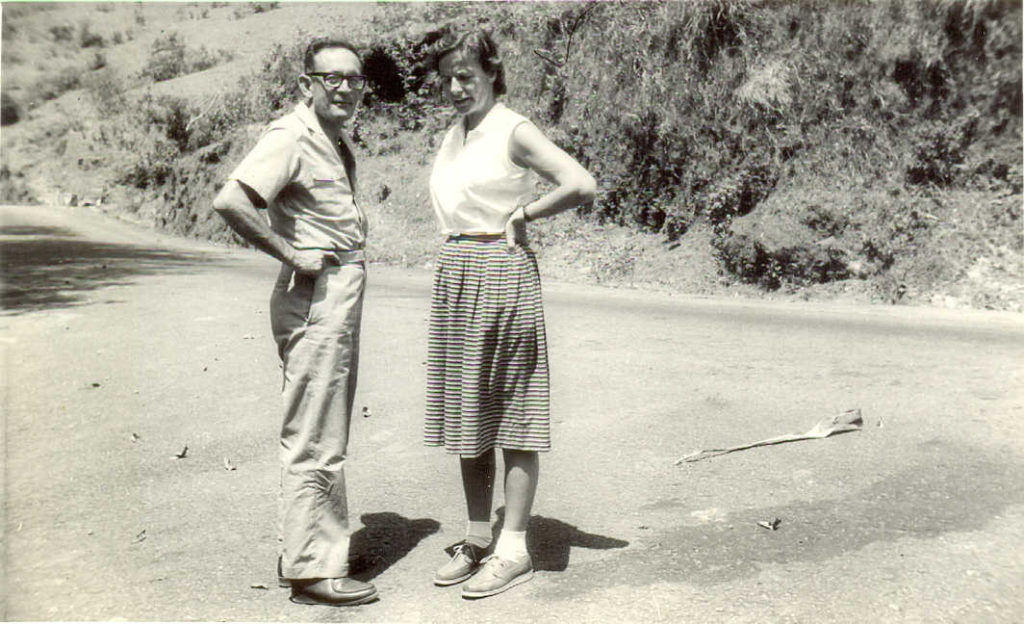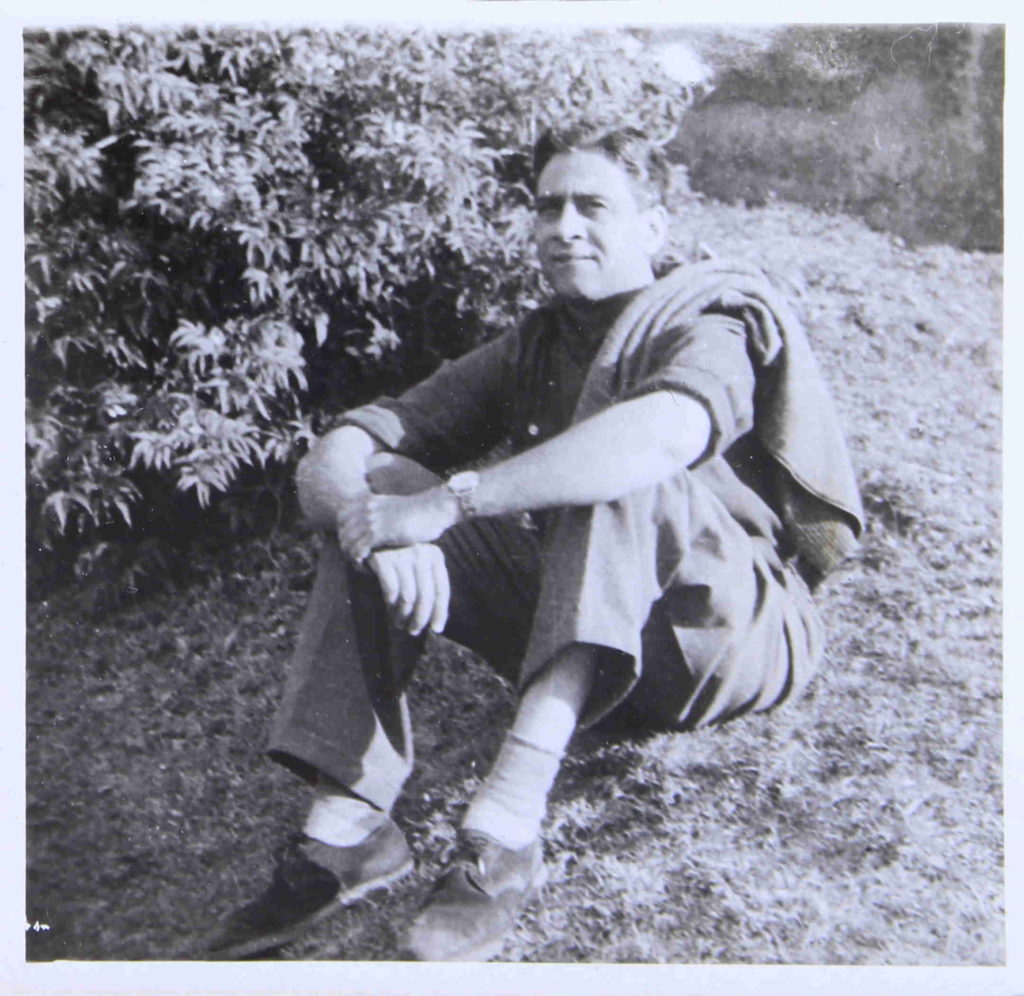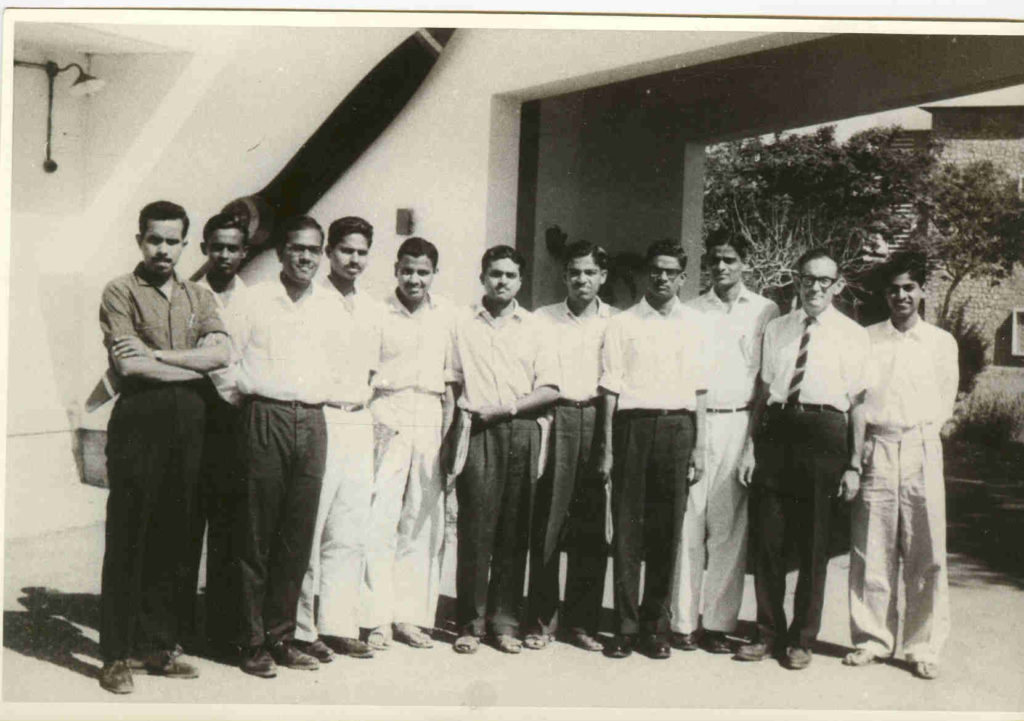
In 1964, Hans Liepmann from Caltech arrived at IISc for a term. SM Deshpande, then doing his ME in the Department of Aeronautical Engineering, remembers the “glorious combination” that resulted.
“Liepmann taught our batch,” says Deshpande, now at the Engineering Mechanics Unit at the Jawaharlal Nehru Centre for Advanced Scientific Research. “We were very lucky. We were taught by Roddam Narasimha; his teacher was Satish Dhawan, and Dhawan’s teacher was Liepmann.”
Liepmann, who passed away on 24 June 2009, was a fluid dynamicist, and later Director, at the Graduate Aerospace Laboratories of the California Institute of Technology (GALCIT). He was renowned for his teaching prowess as much as for his research, with both Dhawan and Narasimha being his PhD students.
Liepmann was renowned for his teaching prowess as much as for his research, with both Dhawan and Narasimha being his PhD students
It was in 1946 that Dhawan arrived at Caltech, wanting to work with Liepmann. But the Indian students Liepmann had worked with until then had given him the impression that “perhaps the select group that came to Caltech from India had prejudices against manual labor and essential, but not highly intellectual and glamorous, routines.”
“I have often mused about the bifurcation points in one’s life,” wrote Liepmann, recalling this episode in his obituary of Dhawan, “the times when a small and sometimes even unwelcome choice of alternatives results in major changes in one’s future. One of these bifurcations (in, I believe, 1946) resulted in my meeting Satish Dhawan.”

He did take Dhawan as his student, who impressed him immediately. Dhawan, for his PhD thesis, had an original approach to a difficult problem – that of measuring the skin friction of an object past which a fluid flows. Think of the wing of a moving aircraft. The air surrounding it can be thought of as having many layers, each of which has a different flow velocity. The boundary-layer is a thin layer of the air in contact with the wing; across the boundary layer, the flow velocity of air decreases to zero. The aircraft wing encounters resistance because of the friction its surface has with the boundary layer of the air. Theoretical estimates for this skin friction were known. But no one had directly measured it until Dhawan devised an experimental apparatus to do so. This was a problem that, according to Liepmann, was of “both fundamental and direct technical importance.” Dhawan also worked with Anatol Roshko, another of Liepmann’s students, on other projects. (Roshko later became the Theodore von Kármán Professor of Aeronautics at GALCIT, a position Liepmann once occupied. Roshko passed away in January 2017.)
This tradition of scientific research on engineering problems was what GALCIT was about, with its research programme emphasising a solid grounding in the basic sciences. Theodore von Kármán, the first director of GALCIT, had envisioned it “as a center for the fusion of science and technology.” Liepmann himself, in fact, was a physicist by training whose transition to fluid dynamics happened in somewhat unusual circumstances. As the story goes, Liepmann blurted out “hydrodynamics” when asked what he wanted to do next at a party in a pub in Zurich after his PhD defense. This led to an offer from Kármán; Liepmann joined Caltech in 1939.
Theodore von Kármán, the first director of GALCIT, had envisioned it “as a center for the fusion of science and technology”
Dhawan came back to India after his PhD and joined IISc’s Department of Aeronautical Engineering in 1951. (The department was later renamed Aerospace Engineering.) Two years later, Roddam Narasimha enrolled in the department for a two-year diploma (equivalent to a Master’s) in aeronautics. He learned to love fluid dynamics in those two years, not least due to Dhawan’s influence. “Dhawan’s lectures were advanced, simple and elegant all at the same time,” wrote Narasimha in a memoir, “and quickly gave students a sense of confidence.” Traits that Dhawan’s teacher, Liepmann, also had. “There was a permanent hint of a smile on his face while he lectured,” wrote Narasimha of Liepmann, “as if the way he was deriving his results was fun because it was so simple and offered such rich insights.”
After his diploma course, Narasimha was unsure whether to pursue research. Dhawan, he says, “solved the problem for me by saying, ‘I don’t know what you’re going to do. Why don’t you stay here for two years and do some research, and we can have some fun?’”
In the labs, Dhawan was building the instruments necessary for research, including the first supersonic wind tunnels in India. With his students, he once rigged up a supersonic wind tunnel that, as Narasimha recalls, “ran on compressed air from two wartime surplus oxygen tanks from a Dakota [aircraft].” Dhawan’s labs had other custom-made “gizmos” that “somehow managed to convey an impression of both science and engineering.” In this period, Narasimha says, “I learnt how, with some ingenuity, one can overcome what seem like insuperable difficulties.” An approach that Liepmann approved of.

At the end of two years Narasimha went to Caltech to do his PhD – with Liepmann. He completed his PhD in 1961, and, like Dhawan, he too returned to IISc.
“Many people who came to do [an] ME later used to say ‘You were very lucky; we didn’t have such a galaxy of great teachers,’” says Deshpande, who did his ME thesis with Dhawan and his PhD with Narasimha.
“They were heady times,” says HS Mukunda, Deshpande’s friend and former classmate, “far more because we were energetic young aspiring students arguing and disagreeing on issues – scientific and non-scientific – expecting far more than was given to us by our teachers.” Mukunda is at the Combustion, Gasification and Propulsion Lab of the Department of Aerospace Engineering, IISc.

“That’s really our main goal in life, if we take the professorship seriously,” Liepmann once said of teaching. “And also, I think, it has the more lasting influence. Whether you like it or not, most of your startling papers are going to be footnotes in handbooks in the not-too-distant future, and that goes for everybody…But the teaching, the passing on of a certain style and approach to science, and also to knowledge, in a sense; that is, in my opinion, a more challenging and also more rewarding business.”




